Tom’s Hardware Verdict
Performance may be slower than the “solo” NVMe Base, but you still get reliable performance from both drives. The ability to boot from NVMe and use a PCIe add-on board in the second slot makes this a useful tool for PCIe hackers.
Easy to build
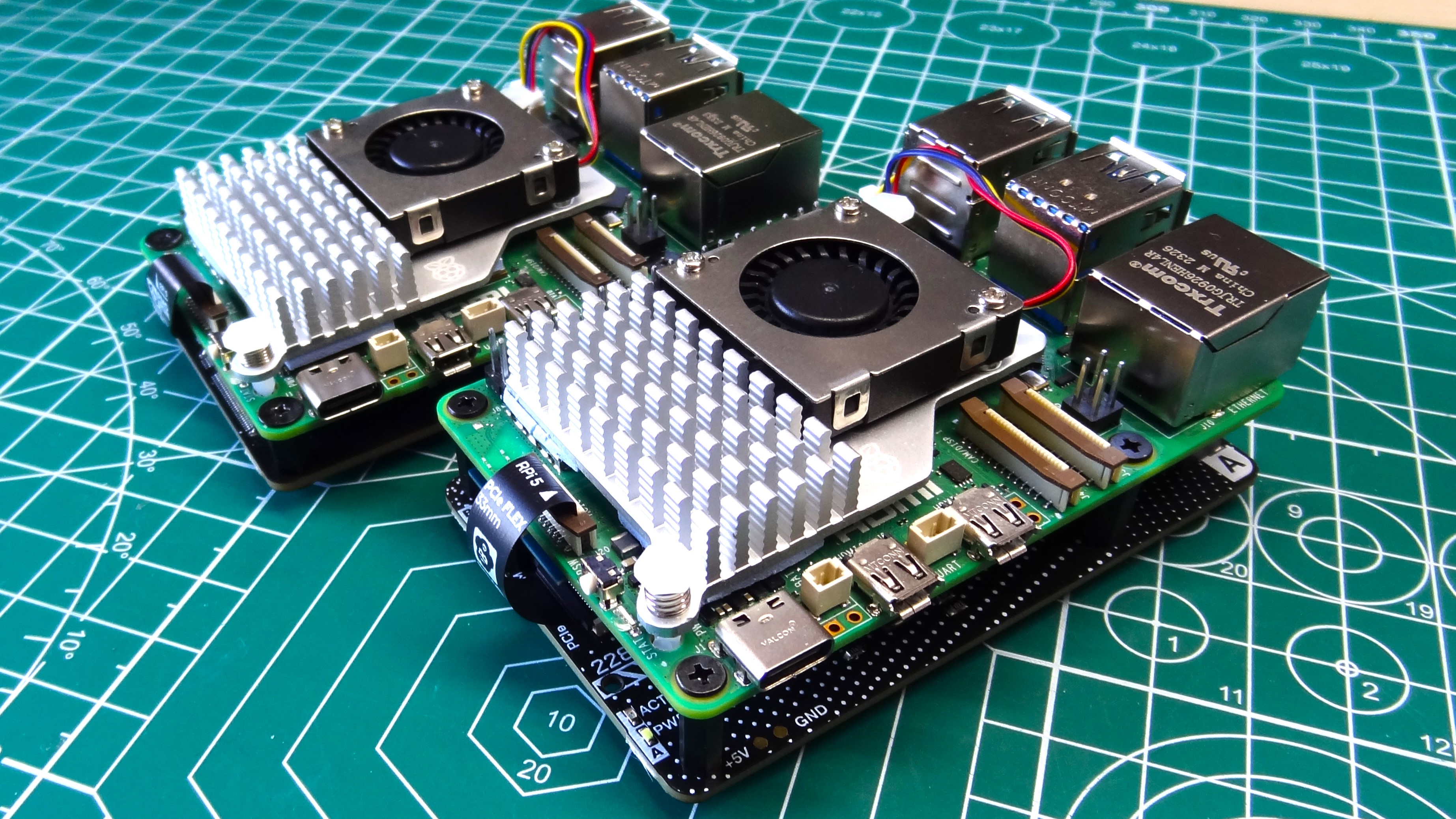
Uses 2230 to 2280 drives on both slots
Easily enough space for two drives
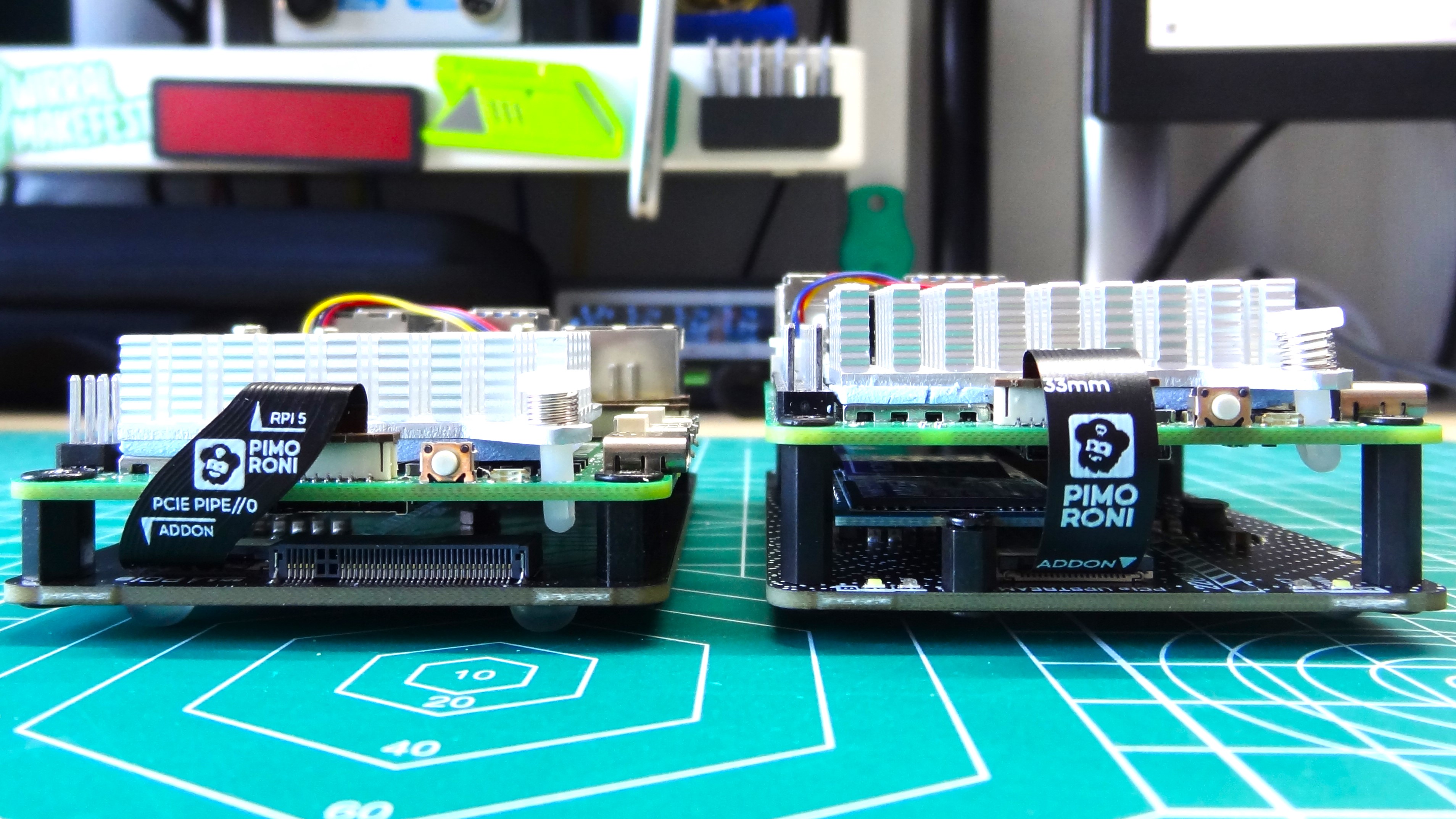
Half the speed
PCIe connection blocks micro SD card slot
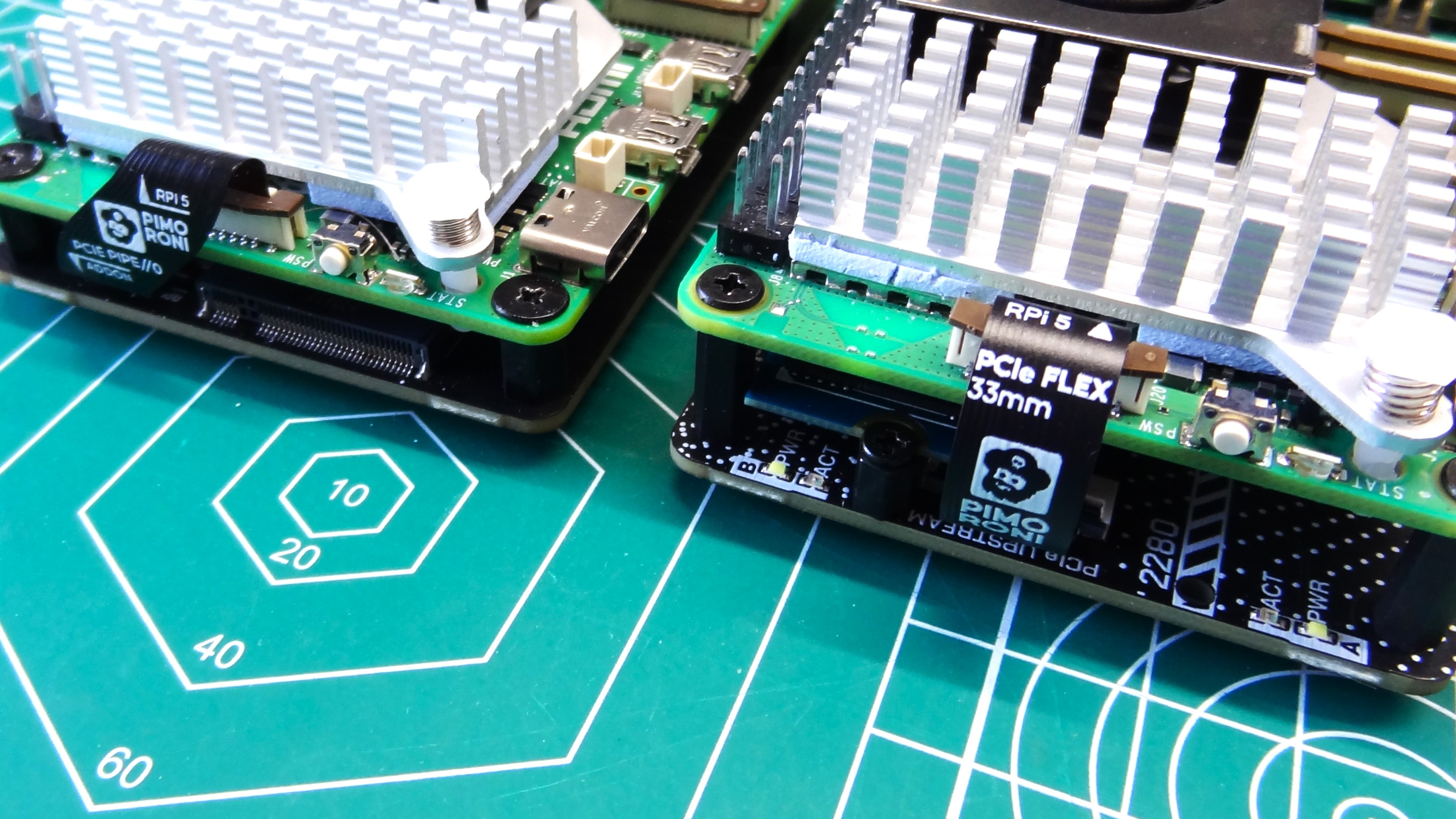
No cases, yet
Why you may trust Tom’s HardwareOur expert reviewers spend hours testing and comparing products and services so you can choose the best for you.Find out more about how we test.

It seems that PCIe based add-ons for theRaspberry Pi 5are en vogue as we seem to be reviewing a plethora of boards. So far we have reviewed thePineboards Hat Drives,Pimoroni’s NVMe Baseand most recently the officialRaspberry Pi M.2 HAT+. All of these boards offer a single M.2 connection for PCIe devices or thebest NVMe SSDs.
Pimoroni’s $30NVMe Base Duooffers dual M.2 connections for PCIe / NVMe but there is one caveat, performance isn’t as fast as “solo” NVMe HAT boards. Pimoroni is upfront about this and in this review we’ll delve into the performance data and explain why.
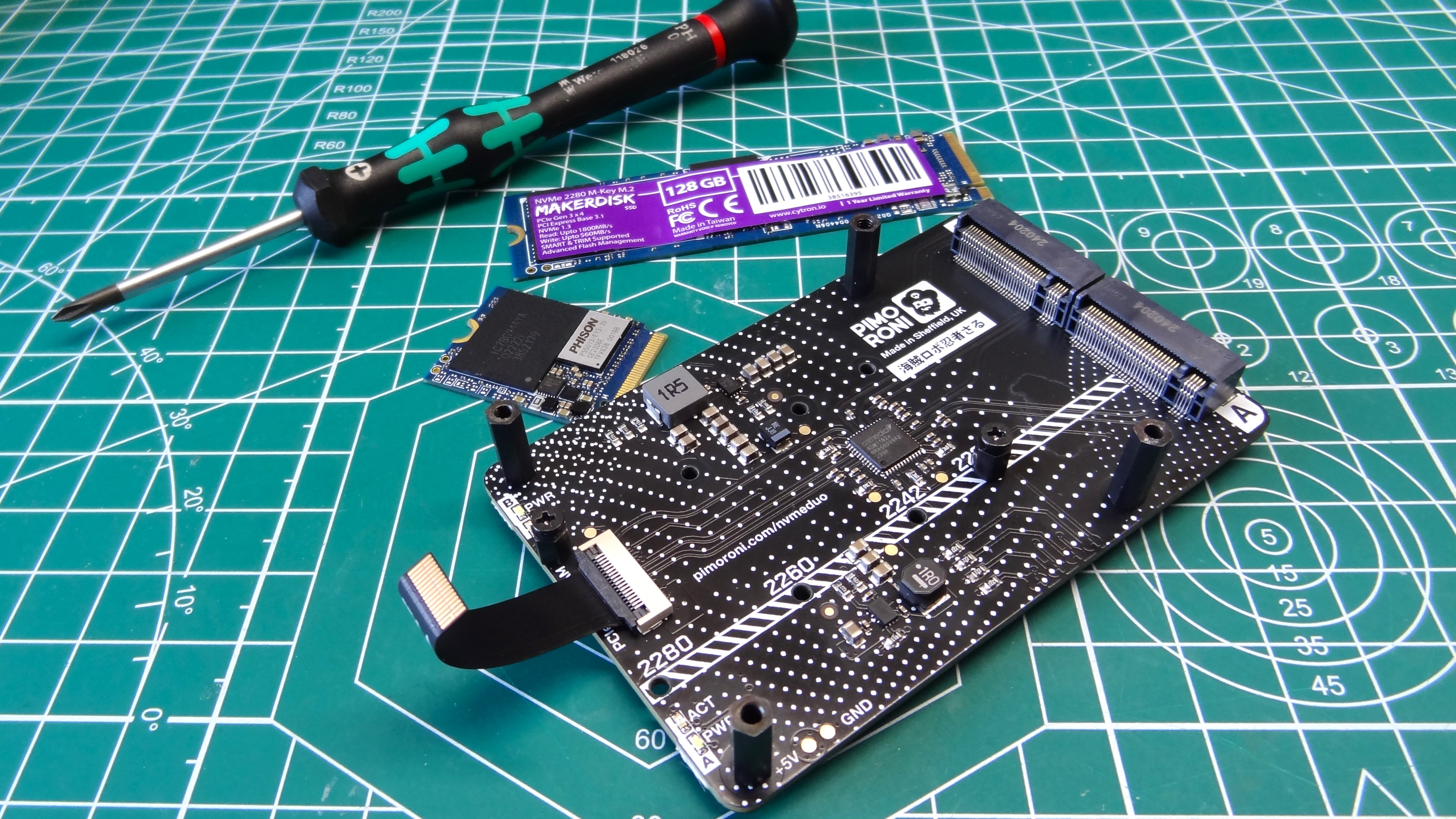
Pimoroni NVMe Base Duo Specifications
NVMe Base Duo Design
At a glance, the NVMe Base and the Duo are so much alike. The only real differences being the dual slots on the Duo, and the ASM1182e PCI Express packet switch, more on that later. Designed to fit on the underside of the Raspberry Pi 5, well away from the GPIO and your choice of cooling, the NVMe Base Duo matches the footprint of the Raspberry Pi.
Held in place using four M2.5 standoffs and screws, the only connection between the two boards is the custom made PCIe Flat Flex Cable (FFC) which provides both data and power to the NVMe Base Duo. The FFC also blocks easy access to the micro SD card slot. You probably won’t need it, but when you do, it won’t be easy.
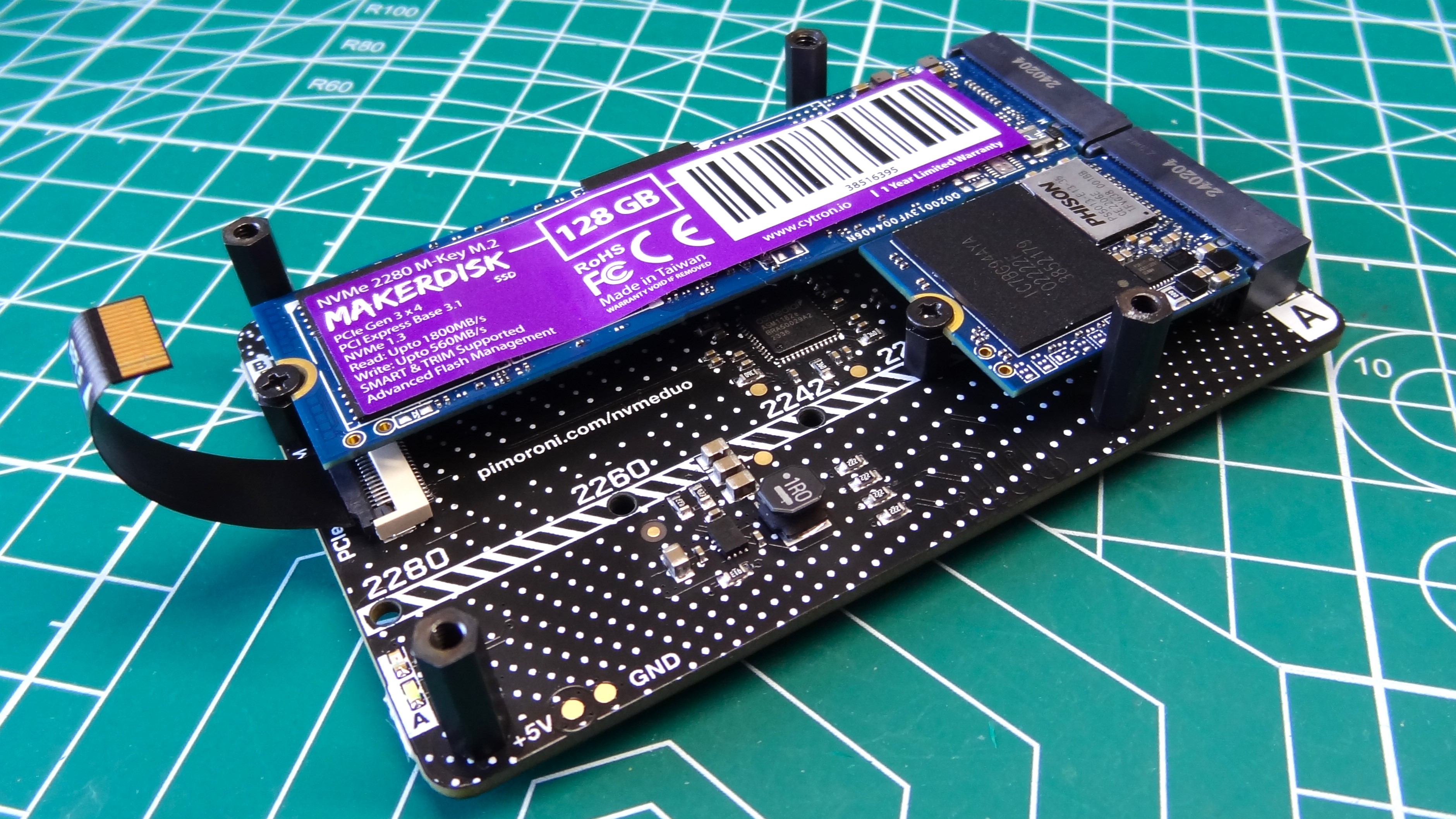
The NVMe Base Duo is slightly taller than the NVMe Base, only a few millimeters but it will matter for those of us who 3D print cases and chassis.
Building the NVMe Base Duo is simple. A few screws and the FFC is all it takes. We used both a 2230 and 2280 NVMe SSD and the mounting screw was easy to move around the board.
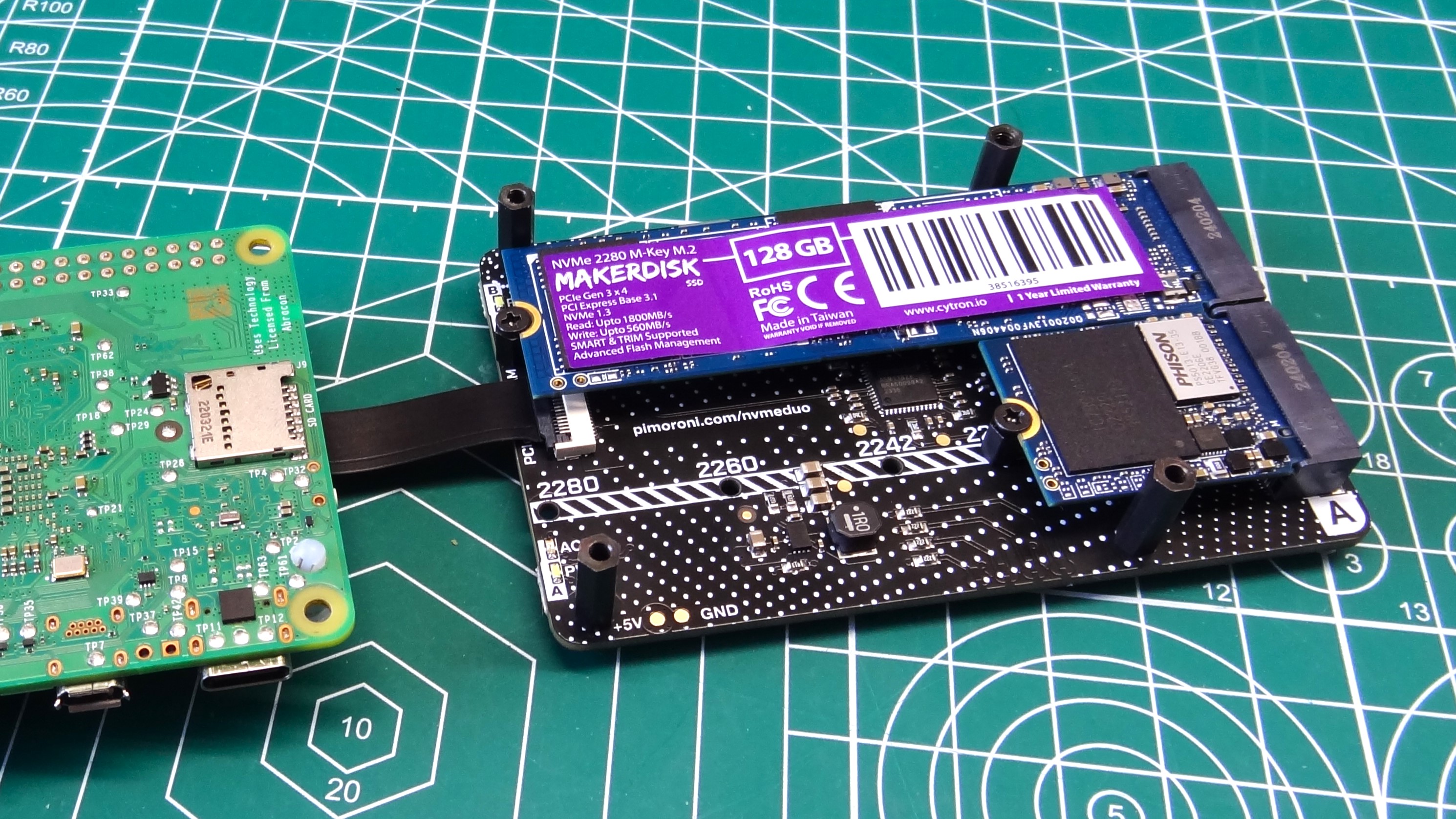
NVMe Base Duo Performance
We updated the firmware to the latest version, currently Jul 22, 2025, but we also tested it on May 17. Firmware released after May 17 benefits NVMe Base Duo greatly, not for speed or throughput, rather the ability to boot. On earlier firmware versions, any NVMe drives behind a PCIe packet switch chip would not boot.
The Raspberry Pi 5 could only see drives directly on the PCIe connection, not hidden behind the packet switch. This meant that using an older firmware would force the user to boot from USB / Micro SD and use the NVMe drives for general storage. Not ideal but it worked. These newer firmwares now provide users with faster boot times and plentiful storage space.
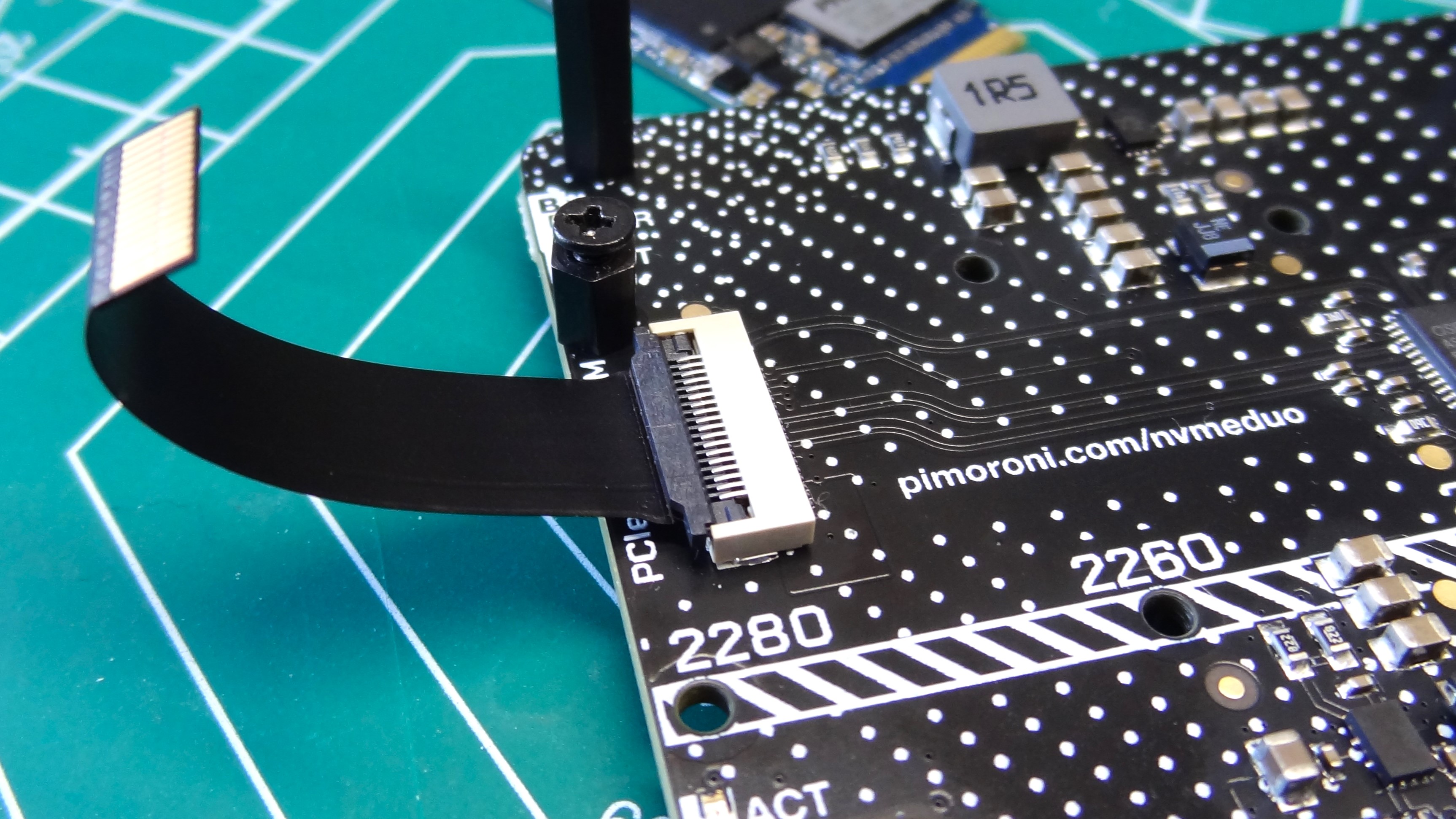
Boot time is a respectable 20.38 seconds, comparable to the best Micro SD cards using A1 and SDR104 compatibility which come in at 21.28 seconds. For reference, Pimoroni’s NVME Base at Gen 3 speeds booted in 16.79 seconds.
We tested two different operating systems, each on its own drive. In slot B we had a Phison based 2230 NVMe SSD with Raspberry Pi OS. In slot A we had the latest Ubuntu 24.04 release. Why did we mention slot B before A? Because the drive in slot B is always chosen as the boot. We swapped the drives (A: Raspberry Pi OS, B: Ubuntu) and re-tested. Ubuntu 24.04 booted from slot B. Logically we would expect A to be the first choice for a boot device, but this is something to be mindful of.
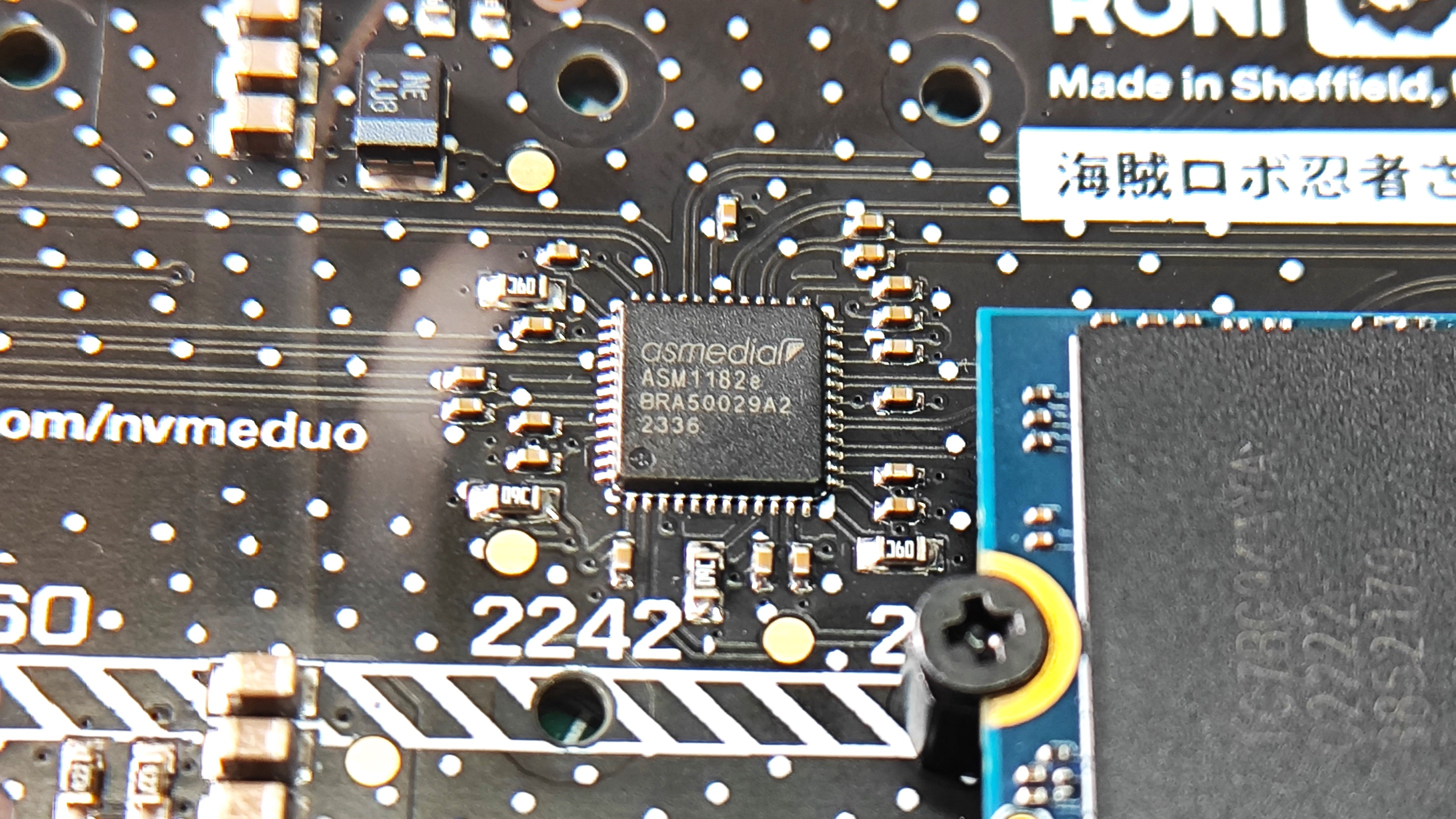
Performance on the NVMe Base Duo is as Pimoroni explains on itsproduct page. If you plan to run just a single drive, then by all means bump up the speed to PCIe Gen 3 and enjoy! If you want to do that, perhaps theNVMe Baseis a cheaper and better option.
The NVMe Base Duo is best experienced at PCIe Gen 2 speeds, but why? This is down to the ASM1182e PCI Express packet switch. Essentially this gives us two PCIe x 1 Gen 2 ports. Yes this means that we take a performance hit. In our tests we confirmed Pimoroni’s claim of 450 MB/s total throughput. If using one drive then you get all the throughput, but add a second drive and you’ll split the throughput equally between them.
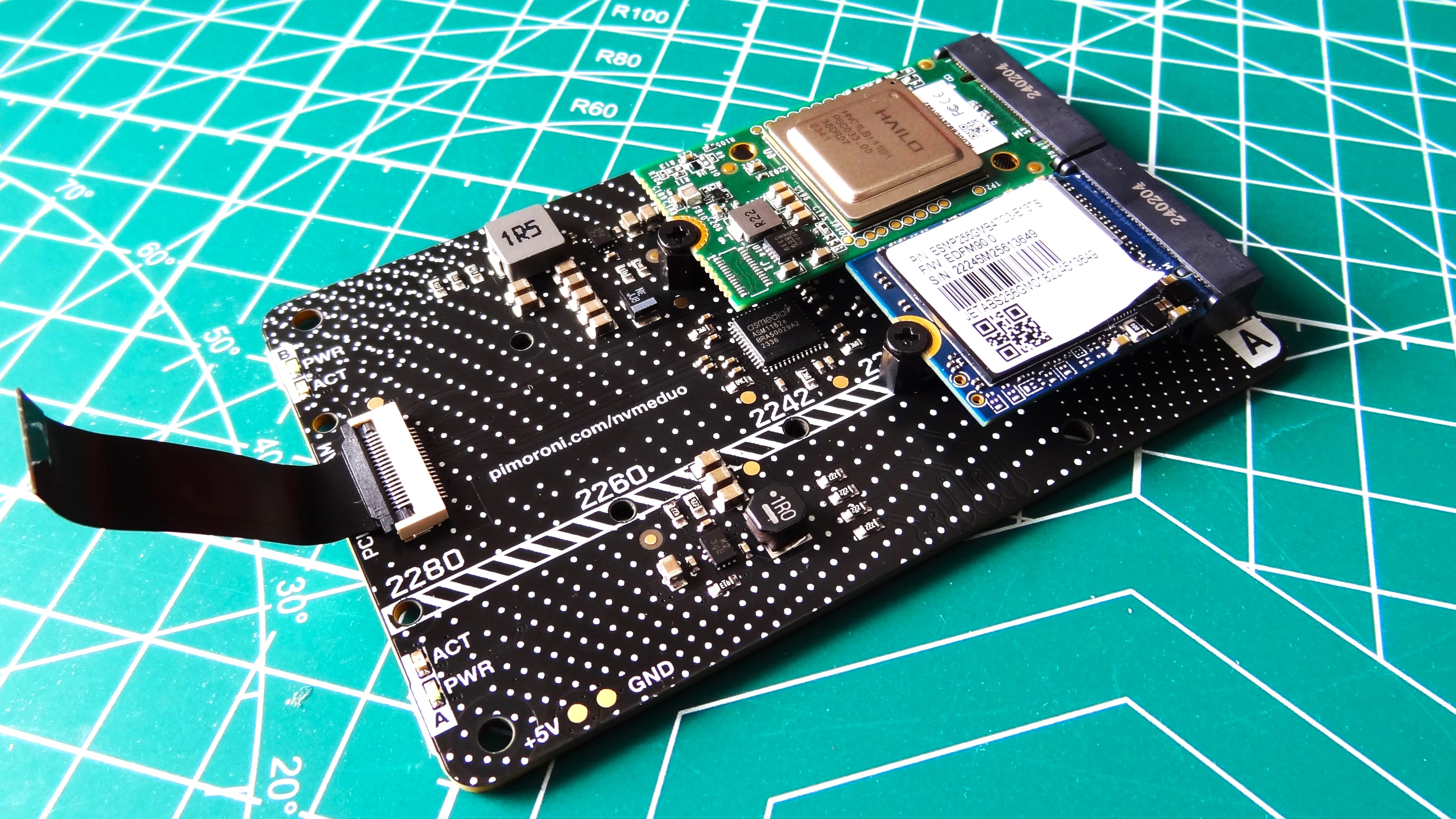
We tinkered with this a little, hoping that PCIe Gen 3 could be coaxed out of the ASM1182e, but alas it wasn’t to be. PCIe Gen 2 speeds are still faster than Micro SD which manages an impressive, but slower 90.5 MB/s read and 30.8MB/s write speed.
Perhaps though you don’t want to use the additional M.2 slot for an NVMe drive, maybe another PCIe device? We tested the Hailo-8L NPU that comes with the Raspberry Pi AI Kit. Placing the NPU in slot B and our OS drive in slot A we were able to run both devices at the same time. So we could have a fast NPU and fast storage bringing us improved AI performance.
Who is Pimoroni NVMe Base Duo for and what can they do with it?
Small network storage devices for your media are the first thought that springs to mind. With 4TB NVMe drives becoming relatively plentiful we could build a small file server that sits on a shelf without much noise. We could also add aRaspberry Pi Camera Module 3and create a streaming video server which stores video locally.
Bottom Line
Pimoroni’s NVMe Base Duo is more expensive than the NVMe Base, but if you want an extra drive then the Duo is a great platform. There are alternatives, Pineboards has its own version that we have on the test bench, and Geekworm’s X1011 offers four drives. But Pimoroni’s $30 NVMe Base Duo is a solid piece of kit on which we can build a power Arm powered PC.
Les Pounder is an associate editor at Tom’s Hardware. He is a creative technologist and for seven years has created projects to educate and inspire minds both young and old. He has worked with the Raspberry Pi Foundation to write and deliver their teacher training program “Picademy”.